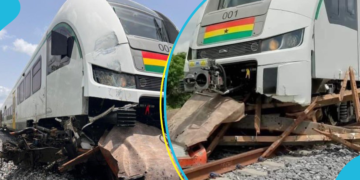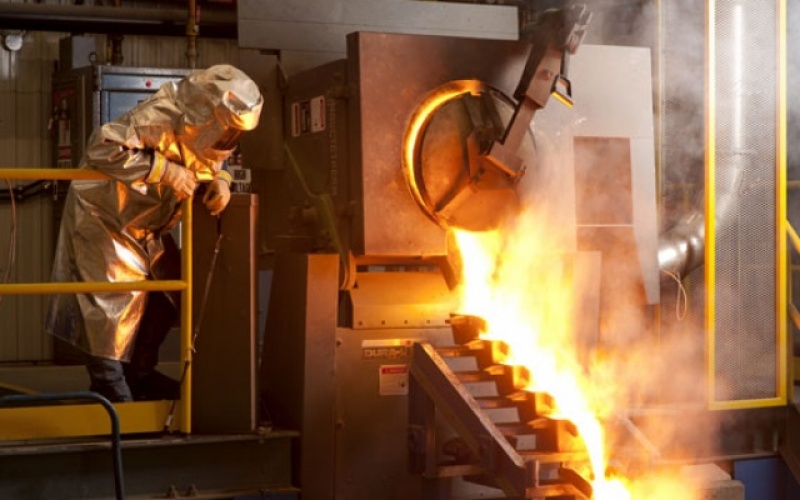Asanko Gold Inc. (TSX:AKG)(NYSE American:AKG)(NYSE MKT:AKG) has provided an operational update on the Asanko Gold Mine (AGM), located in Ghana, West Africa.
Highlights:
• Reconciliation of grade control model to resource model reflecting total gold ounces up by 7% for three months ending August 2017
• Reserve reconciliation showing significant improvement comparing the mill feed to the reserve model over last three months
• Mill feed grades in August were 2% above reserve grades
• Mill feed to reserve model reconciliation of 100% in August
• Blast movement technology contributing significantly to mining reconciliation improvements
• 436,000 tonnes of ore at 1.95 g/t gold mined in August
• Final commissioning of P5M volumetric upgrades underway, milling circuit achieving levels in excess of 13,500tpd of fresh rock on a campaign basis
• Production on track to meet revised 2017 guidance
• Confirmatory drilling at Akwasiso firms up reserves
• Grade control drilling at Dynamite Hill confirms MRE, ore mining operations to commence in Q4 2017
Peter Breese, President and CEO, commented: “The mining interventions we put in place in July at Nkran are starting to yield very encouraging results and the blast movement technology is making a significant contribution to the management of ore losses and dilution, as evidenced by the positive variances we are seeing in grade and ounces. The continued positive resource and reserve reconciliations clearly confirm the Life of Mine plan with respect to our future expansions.
The P5M volumetric upgrades are in the final stages of commissioning, with levels in excess of 13,500 tonnes per day of hard rock being processed through the mill. This is a significant achievement as hard rock currently makes up 93% of our mill feed blend whilst we are waiting for a consistent supply of oxide ore, which will come from the Akwasiso and Dynamite Hill satellite pits. In spite of having encountered three mill motor outages in the quarter, the positive results from the mining interventions as well as plant’s performance means we are tracking our revised 2017 production guidance.”
Nkran Resource & Reserve Reconciliation
The reconciliation process to measure the entire value chain from gold in the ground through to mill feed and eventual gold production against the Nkran Mineral Resource Estimate (“MRE”) is ongoing. Both the resource and the reserve reconciliation components have been embedded into the mine planning and mining execution processes.
The resource reconciliation measures the variance between the MRE, which is based on widely spaced drilling information, and the grade control resource model, which is based on high density drilling and provides the most accurate determination of the resource.
As announced in the Q2 2017 MD&A, for the three-month period (May, June and July) the grade control model was within 2% of the resource model. In August, there was a 21% positive variance in ore grade and a 10% positive variance in ounces in the grade control model versus the resource model. This positive grade and ounce variance is significant as it scientifically validates the gold endowment in Nkran and the life of mine plans based on that endowment.
In Q3 2017, the next stage of the reconciliation, which is confirmation of the mill feed to the reserve model, commenced. This reserve reconciliation measures the ability of the mining operations to deliver the planned tonnages and grade predicted by the reserve model to the processing plant.
During July and August, mining operations have been focused on improving ore delineation and the design of the ore polygons to be mined in order to reduce ore dilution and losses. In addition, following the implementation of blast movement technology in July, there has been a continual improvement in the ability of the mining operation to deliver the planned grades and volumes of ore. This is evidenced by the significant improvement in the mill feed to reserve model reconciliation over the past three months.
In August, there was a 2% positive variance on ore grade and a 100% reconciliation on ounces. These improvements are material as they clearly demonstrate the operation’s ability to deliver the mine plan. For August, 436,000 tonnes of ore was mined at 1.95 g/t.
Project 5 Million (“P5M”) Plant Upgrade
Commissioning of the P5M volumetric upgrades continued during the quarter. During July and August, the plant experienced three SAG mill motor outages which resulted in a total of 11 days of lost milling time, notwithstanding this the Company is on track to meet its 2017 revised production guidance. Alongside the spare mill motor onsite, a further two new upgraded mill motors are due for delivery in Q1 2018.
In spite of the mill motor outages, the plant is now achieving, on a campaign basis, daily milling rates of in excess of 13,500 tonnes of fresh ore at 93% of the mill feed blend into the plant, which is well above the design of 60%.
The upgrades to the recovery circuit, which is the second stage of the P5M plant upgrade, are expected to be installed during Q4 2017 and commissioned by the end of 2017, as per the construction schedule.
Akwasiso
During July & August, a confirmatory drilling program was undertaken at the Akwasiso satellite deposit, located approximately three kilometres north east of the processing facility. The purpose of the program was to infill drill test the previously inaccessible area which was covered with tailings from historic artisanal mining activities. The drilling program has firmed up the Akwasiso reserve model. Mining operations will continue to deliver approximately 20,000 tonnes per month (“tpm”) of oxide ore to the plant up to the end of 2017 and then ramp up in fresh ore, in line with mining plans in H1 2018.
In addition, the drilling was also aimed at further investigating any potential mineralisation on the eastern contact between the granite and the sandstone mineralisation trends. A total of 4,051m were drilled and the drilling program has confirmed the continuity of mineralisation at depth and also discovered a new near surface zone of mineralisation along the eastern edge of the deposit. In line with the previous phases of drilling, this drilling program intersected significant near surface mineralisation widths and some exceptional grades. Another round of drilling to test this zone’s continuity at depth will commence in Q4 2017.
Dynamite Hill
In anticipation of commencing operations at Dynamite Hill in Q4 2017, 3,096 meters of grade control drilling has been completed in 65 holes to provide the detail required for the short-term mine plan and to confirm the oxide ore volumes predicted by the resource model. The grade control program has fully validated the Dynamite Hill resource model and the mine plan remains unchanged.
Dynamite Hill will be the second satellite pit to be brought into production and expected to deliver approximately 70,000tpm from Q1 2018 onwards. This will add significant flexibility to the AGM mining operations, thereby further de-risking operational delivery. A local mining contractor, Rocksure, has been appointed to mine the deposit and is in the process of site establishment. The constructions of the haul road linking Dynamite Hill to Akwasiso and the central processing facility is nearing completion.
Source: Ghana/Goldoilgas.com

































